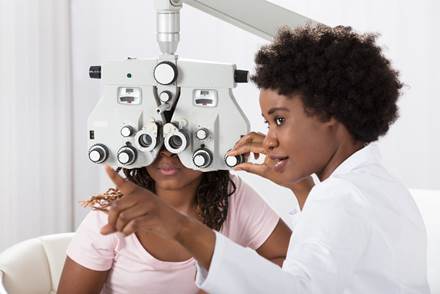
- 1 Patience with New Prescriptions
- 2 Persistent Blurriness
- 3 Ongoing Need for Eye Care
Your much-anticipated new prescription glasses have finally arrived, and you’re ready to see the world in a whole new light – or see it more clearly, anyway. But you put them on and right away notice that things look blurry instead of sharper. How can this be? You take them off and try putting them on again, several times in a row, but your vision is still distorted. Now, instead of enjoying your new glasses, you’re disappointed and frustrated.
Patience with New Prescriptions
Let Your Brain Catch Up to Better Vision. Experiencing blurriness or some distortion with new prescription glasses, whether they’re your first eyeglasses ever or are an updated power of lens, is a common occurrence. Relax. Your eyes are simply adjusting to a new way of seeing after previously compensating for less-than-perfect vision. With first-time corrective lenses or a stronger lens prescription, the brain is receiving images that are different from what it routinely processed prior to the change. Within a few days, you will find the distortion decreasing and begin to enjoy your ability to view things clearly, perhaps for the first time ever.
Make Sure the Glasses are a Good Fit. Another factor possibly causing visual distortion is a change in the shape of your eyeglass frame – for example, going from large frames to small ones. The reduction in lens size can affect the curvature of the glass as well as the range of your peripheral vision. Sometimes the way the frame fits on your face positions the lenses too close or too far from the eye for ideal vision correction. If you continue to feel uncomfortable with how well you see or how the glasses feel on your face, find out if you can fine-tune the frames for a better fit, or ask an optician for help.

Persistent Blurriness
After a few days, if you’re still experiencing blurriness or distortion using your new eyeglasses, it may be that you received the wrong prescription. Unfortunately, on rare occasions this can happen, usually due to human error during your exam, in the course of recording or transmitting the prescription order, or somewhere in the manufacturing process. In the case of continued vision problems, it’s best to contact your optometrist to check that the prescription is correct. You might even need another eye examination to double-check that the prescription is accurate for your corrective requirements.

Ongoing Need for Eye Care
Blurriness can sometimes signal more serious underlying disorders of the eye, such as cataracts, glaucoma or macular degeneration. Issues with your vision, including ones related to adjusting to corrective lenses, point up the necessity of continually monitoring your eye health and the quality of your vision. Changes in eyesight – even minor ones – frequently occur from year to year in one eye or both, and issues like astigmatism or age can further complicate how well you see.

According to the Mayo Clinic, healthy individuals with no symptoms of vision problems should have eye exams according to these guidelines:
- 20s and 30s – every 5 to 10 years
- 40 – 54 years – every 2 to 4 years
- 55 – 64 years – every 1 to 3 years
- 65 years and older – every 1 to 2 years
They also recommend more frequent eye exams if you (1) wear glasses or contact lenses, (2) have a family history of vision loss or diseases of the eye, (3) have a chronic disease that increases your risk of eye disease (e.g., diabetes), or (4) take medications that may result in serious side effects to your eyes.
Â
Bang Kng 22000 puffs
Longhua Manxueling Trading Company , https://www.mxlvape.com
